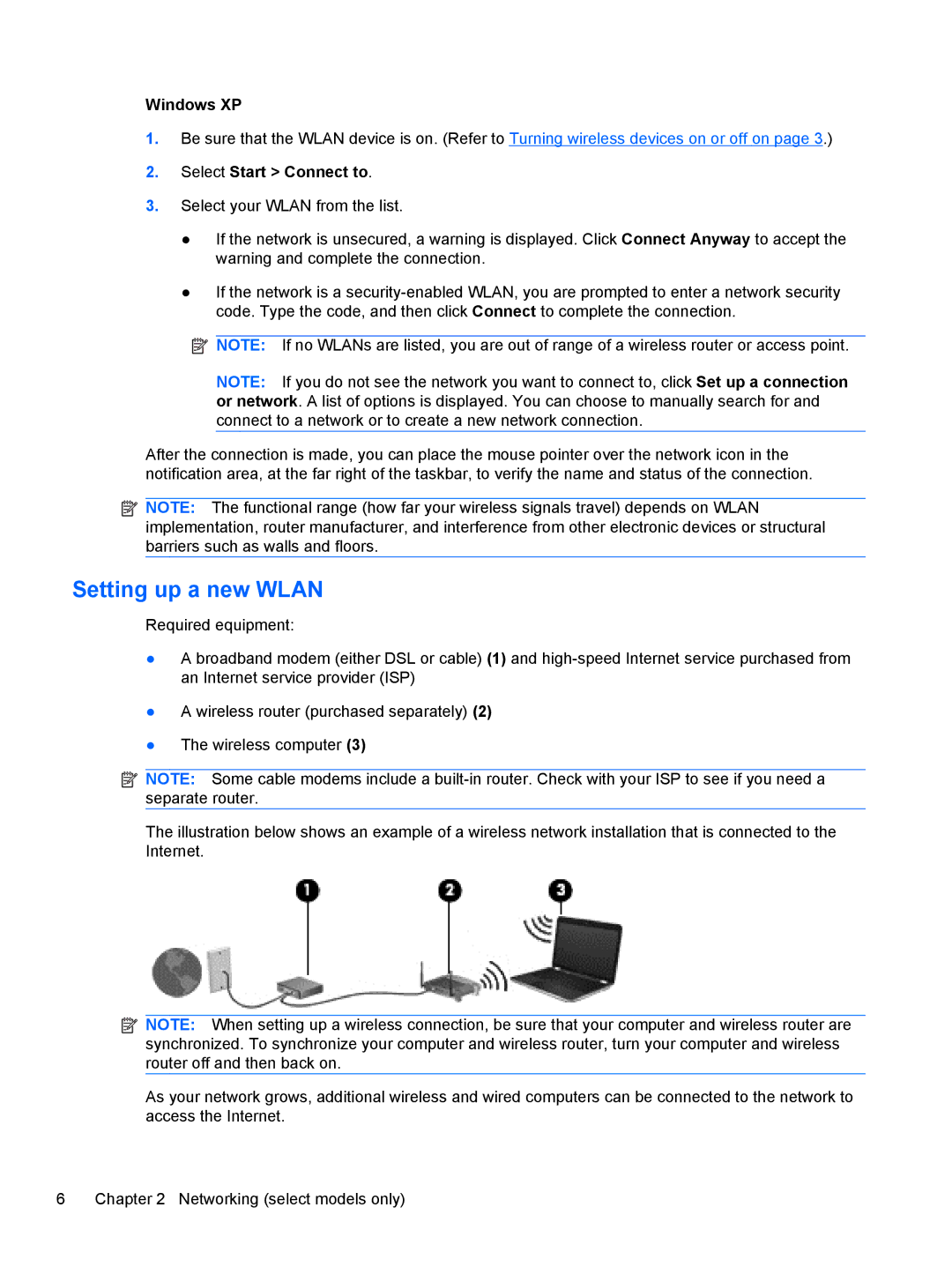
Windows XP
1.Be sure that the WLAN device is on. (Refer to Turning wireless devices on or off on page 3.)
2.Select Start > Connect to.
3.Select your WLAN from the list.
●If the network is unsecured, a warning is displayed. Click Connect Anyway to accept the warning and complete the connection.
●If the network is a
![]() NOTE: If no WLANs are listed, you are out of range of a wireless router or access point.
NOTE: If no WLANs are listed, you are out of range of a wireless router or access point.
NOTE: If you do not see the network you want to connect to, click Set up a connection or network. A list of options is displayed. You can choose to manually search for and connect to a network or to create a new network connection.
After the connection is made, you can place the mouse pointer over the network icon in the notification area, at the far right of the taskbar, to verify the name and status of the connection.
![]() NOTE: The functional range (how far your wireless signals travel) depends on WLAN implementation, router manufacturer, and interference from other electronic devices or structural barriers such as walls and floors.
NOTE: The functional range (how far your wireless signals travel) depends on WLAN implementation, router manufacturer, and interference from other electronic devices or structural barriers such as walls and floors.
Setting up a new WLAN
Required equipment:
●A broadband modem (either DSL or cable) (1) and
●A wireless router (purchased separately) (2)
●The wireless computer (3)
![]() NOTE: Some cable modems include a
NOTE: Some cable modems include a
The illustration below shows an example of a wireless network installation that is connected to the Internet.
![]() NOTE: When setting up a wireless connection, be sure that your computer and wireless router are synchronized. To synchronize your computer and wireless router, turn your computer and wireless router off and then back on.
NOTE: When setting up a wireless connection, be sure that your computer and wireless router are synchronized. To synchronize your computer and wireless router, turn your computer and wireless router off and then back on.
As your network grows, additional wireless and wired computers can be connected to the network to access the Internet.
6 | Chapter 2 Networking (select models only) |
